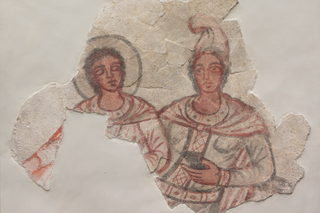Open To: General Public
Admission: Free
Location: ISM Great Hall, 409 Prospect Street, New Haven
Description: Religious Life across Syria during the Roman Period: From Dura-Europos on the Euphrates to Mountaintop Sanctuaries at Mt. Kasion and Doliche
During the Roman period, religious life in Syria (present-day Syria and part of Turkey) underwent profound transformations. Understanding the interplay between cults restricted to initiates in private spaces, monotheistic faiths, and worship at large regional sanctuaries gives us a sense of the exceptionally broad range of religious experiences across this varied landscape. This afternoon symposium brings together four leading scholars to discuss their ongoing research on two of the major religious buildings at Dura-Europos, the mithraeum and the synagogue, and at the sanctuaries at Mt. Kasion and Doliche.
Schedule
1:00 PM Welcome (Eben Graves) and introduction (Blair Fowlkes Childs)
1:15-1:45 Lucinda Dirven, “The Dura Mithraeum. New Perspectives on an Old Find”
1:45-2:15 Zsuszanna Gulácsi, “Visual Catechism in mid-3rd century Mesopotamia”
2:15-2:45 Discussion and Q&A (moderated by Blair Fowlkes Childs)
2:45-3:00 Break
3:00-3:30 Alexis Belis, “Zeus Kasios: Iconography of a Greek Mountaintop Cult in Roman Syria”
3:30-4:00 Michael Blömer, “Where Iron is Born. The Sanctuary of Jupiter Dolichenus in Doliche”
4:00-4:30 Discussion and Q&A (moderated by Blair Fowlkes Childs)
4:30-5:00 Reception
